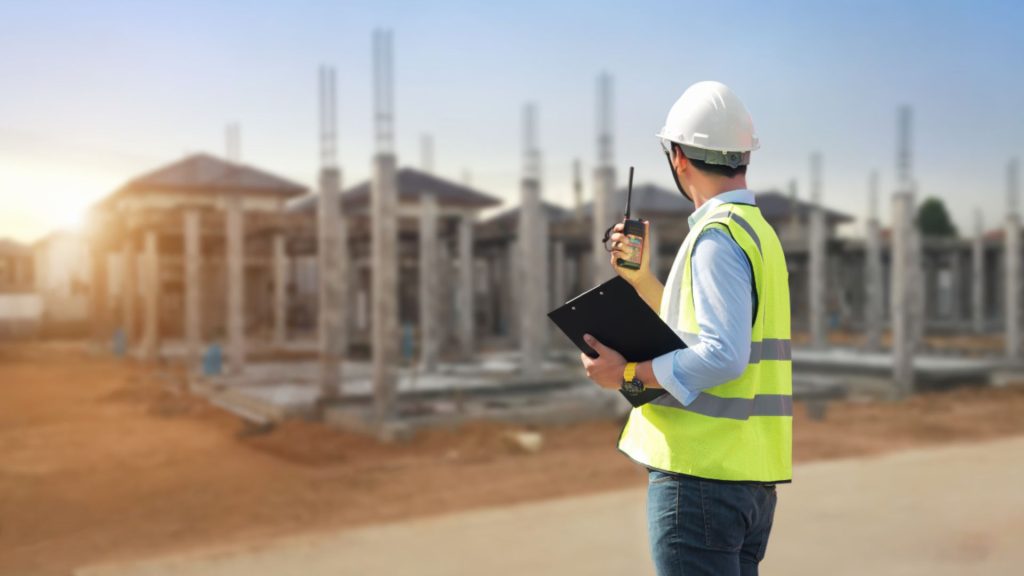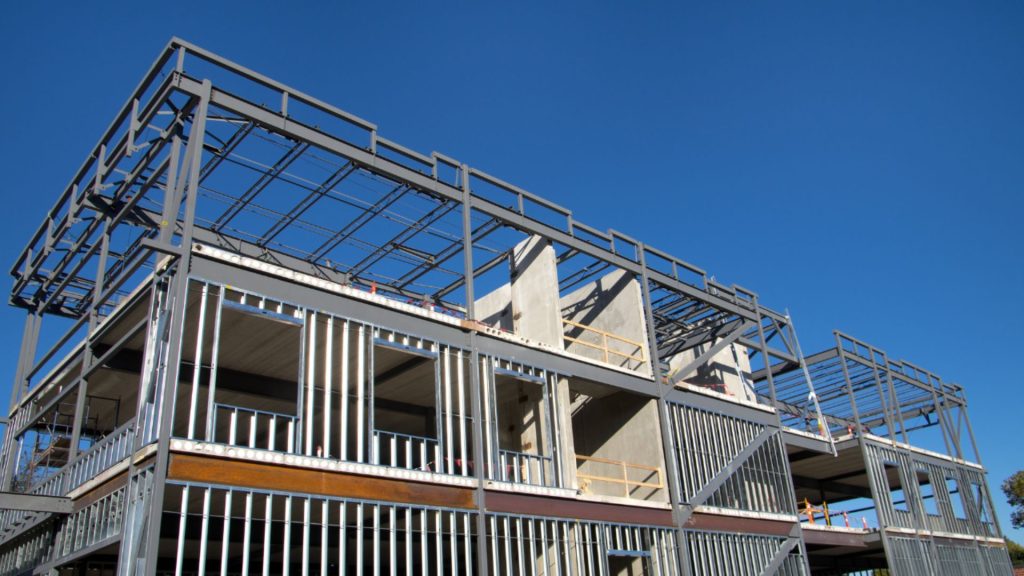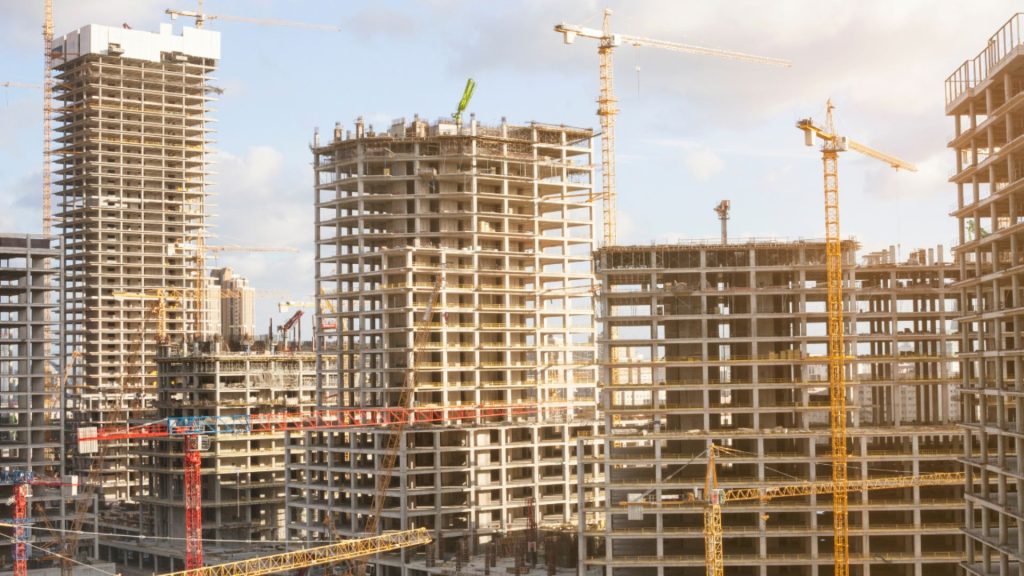Gravity load is a fundamental aspect of building construction that refers to the force exerted by the Earth’s gravity on the structural components of a building.
It is essential to understand and analyze gravity load to ensure the structural integrity, safety, and functionality of a building.
This blog aims to provide a comprehensive overview of gravity load, its calculation, distribution, and the importance of considering it in building design.
What is Gravity Load?

Gravity load is an essential concept in the field of structural engineering. Consisting of the weight of all permanently fixed components within a building, gravity load comprises a crucial consideration in the design and construction of any structure. As its name suggests, gravity load is fixed and unchanging, inevitably impacting the overall stability and load-bearing capacity of a building’s framework. While it is but one of many factors involved in erecting a safe and durable structure, gravity load is fundamental to ensuring a building can stand the test of time.
How To Do Calculation of Gravity Load?
The calculation of gravity load involves a complex process of determining the weight of each individual component of a building. It is a crucial step in engineering design as it ensures that the structure can withstand the force of gravity.
This calculation takes into account various factors such as the density and dimensions of the materials.
Concrete and steel are two examples of commonly used construction materials whose weights can be determined through mathematical equations.
By understanding the weight of each component, the total gravity load on the building can be summed up, and appropriate measures can be taken to ensure the safety and stability of the building.
- Build 20 different models that each teach about force, load, compression, tension and more
- Over 285 interchangeable building pieces
- Includes 36-page, illustrated experiment manual and Assembly guide
- Skill level: Intermediate
- Gordon, J. E. (Author)
- English (Publication Language)
- 424 Pages – 07/10/2003 (Publication Date) – Grand Central Publishing (Publisher)
- Hardcover Book
- Mahamid, Mustafa (Author)
- English (Publication Language)
- 960 Pages – 05/22/2020 (Publication Date) – McGraw Hill (Publisher)
- Cool and funny t shirt for any Structural Engineering Major college student, civil engineers and more! Make your friends and family laugh with this hilarious t-shirt.Great as a gift for Mother’s day or Father’s day.
- Whether you are looking for the perfect Graduation, Christmas gift or celebrating a birthday, searching for an awesome t-shirt collection, buy something for mom, dad or yourself ,look no further and buy this shirt today!
- Lightweight, Classic fit, Double-needle sleeve and bottom hem
- For the Little Engineer: Help your kid explore his/her passion for science with this amazing construction toy kit by V Generations! Exciting, challenging and engaging, our model building kits will keep little engineers on their toes and open the door to science and knowledge!
- Complete Building Kit: The V Generations Bridges and Building STEM kit has no less than 250 pieces that allow kids to build more than 15 models of bridge and construction structures, encouraging limitless creativity and dexterity for kids ages 8 and above.
- Learn Science and Engineering in a Fun Way: Our engineering kits for kids age 8-12 are a fun way to encourage children to harness their abilities and learn more about science, structural engineering, force, load, compression and tension in an interactive, hands-on learning manner.
- Skill Development and Stimulating: The structural engineering kit not only introduces kids to this amazing science field but also can contribute to improving dexterity, logical and critical thinking, hand-eye coordination, and problem-solving skills.
- Wonderful Gift Idea: The V Generations bridge building kit makes a thoughtful gift for boys and girls passionate about science! This comprehensive kit will be a perfect gift for a special occasion, Christmas, holiday, celebration, birthday, or anniversary.
Understanding the Distribution of Gravity Load in Building Structures

The proper distribution of gravity load is a crucial step in ensuring the stability and safety of any building.
Once the total load is calculated, engineers must meticulously analyze how it will be transferred and supported by the structure’s individual components.
Walls, columns, and foundations all play a vital role in this transfer of weight, and designers must take into account factors like the building’s layout and materials used to make sure the load is evenly and safely distributed.
A thorough understanding of load-bearing capacity is also essential to creating a structure that can withstand the stresses placed upon it.
With accurate analysis and careful consideration, proper distribution of gravity load can help ensure a building remains strong and stable for decades to come.
Importance of Considering Gravity Load in Building Design:

Considering gravity load is vital for several reasons:
1. Structural Integrity:
When it comes to building design and safety, structural integrity is of utmost importance. Gravity load, or the natural force that pulls objects towards the centre of the earth, serves as a foundation for determining the size and strength of the building’s support elements.
From columns to beams to foundations, these structural elements must be designed in a way that can safely bear the weight of the building and everything within it.
In essence, proper structural design can mean the difference between a safe and secure building, and one that is prone to catastrophic failure. It’s an important consideration that should never be overlooked.
2. Safety:
Safety is paramount in the design and construction of any building. It is crucial that engineers perform accurate calculations, such as gravity load assessments, in order to ensure structural integrity.
Neglecting to take gravity load into consideration could lead to devastating consequences, such as excessive deflection, bending, or even collapse.
It’s imperative that engineers are diligent in their work to ensure that the building can withstand its own weight as well as any additional loads it may encounter throughout its lifetime.
Taking extra precautions in the design and construction processes helps to ensure the safety of occupants and bystanders around the structure.
3. Building Codes and Standards:
Building codes and standards are essential to the safety and longevity of any structure.
They provide strict guidelines for designing buildings that can withstand gravity, ensuring the safety of those who occupy them. Structural engineers must follow these regulations and incorporate them into their designs to ensure their compliance.
While it may seem tedious to adhere to these regulations, their importance cannot be overstated.
By complying with building codes and regulations, engineers are able to create buildings that can stand the test of time and provide a safe environment for people to live and work in.
4. Load Combination:
Structural engineers face the challenge of ensuring that buildings can withstand various types of loads, including gravity load, live load, wind load, and seismic load.
For proper load combination analysis and determining the design requirements for structural elements, it is essential to accurately assess the gravity load and combine it with other loads.
As the primary load on buildings, gravity load is crucial in ensuring a building can withstand maximum loads while maintaining its safety and integrity.
Therefore, a thorough understanding of the load combination is critical to creating a robust and reliable structure that can withstand the rigours of time and nature.
Different Techniques To Use Mitigating Gravity Load

Architects and engineers employ various techniques to mitigate gravity load, including:
1. Efficient Design:
Architects and engineers are constantly seeking ways to minimize the impact of gravity on their designs. One effective technique is through the power of efficient design.
By carefully assessing the architectural layout and structural system, they can identify areas where unnecessary weight can be eliminated. This results in a reduction in the overall gravity load that the building must bear.
From innovative building materials to streamlined building geometries, there are a variety of strategies that can be employed to achieve this goal.
The end result is not only a more structurally sound building but one that is also more environmentally friendly and cost-effective.
2. Material Selection:
When it comes to building structures, material selection is a crucial aspect of the design process. Engineers strive to create buildings that are both structurally sound and aesthetically pleasing, but nowadays, a third factor must also be considered: weight.
The overall weight of a building can impact its overall efficiency and performance. Thus, it’s important to choose lightweight materials without compromising the building’s structural integrity.
For example, lightweight concrete or steel trusses are excellent choices that can reduce a structure’s weight while still supporting its load. Ultimately, selecting suitable materials is vital to creating a sustainable and safe building for the future.
3. Advanced Structural Systems:
As the world becomes more conscious of our impact on the environment, architects and engineers are continually seeking new ways to minimize weight while still achieving structural stability.
Advanced structural systems, like space frames and precast concrete panels, are a promising solution to meet these demands. These innovative systems can distribute gravity load more efficiently, allowing for less material to be used without sacrificing strength.
Not only does this reduce the amount of resources needed, but it also cuts down on transportation costs.
As technology continues to evolve, we can look forward to more sophisticated structural systems that provide both practicality and aesthetic appeal.
4. Adequate Foundations:
Building a strong and reliable structure requires more than just above-ground planning and design. Adequate foundations are critical in ensuring the long-term stability and safety of any construction project.
A well-designed foundation effectively distributes the weight of the entire superstructure to the ground, maintaining balance and strength even in the face of intense pressure and gravity.
Without a strong foundation, any building risks settling and shifting, which can cause serious structural damage and even threaten the safety of its occupants.
Proper planning, attention to detail, and quality materials are key to creating a foundation that will stand the test of time and provide a solid footing for any type of construction project.
FAQ’s
What are the 3 types of load on a building?
The three types of loads on a building are gravity loads, lateral loads, and dynamic loads. Gravity loads refer to the downward forces exerted by the building’s own weight and the weight of its contents.
Lateral loads are horizontal forces acting on the structure, such as wind or seismic forces. Dynamic loads are transient or moving loads, including those caused by occupants, equipment, or vibrations.
What are the types of gravity loads?
The types of gravity loads include dead load, live load, and environmental load. Dead load is the weight of permanent components like walls, floors, and roofs.
Live load is the variable weight from occupants, furniture, and temporary loads. Environmental load encompasses factors like snow, rain, and wind that affect the building’s structure.
What is an example of a gravity load? What is the difference between gravity loads and lateral loads?
An example of a gravity load is the weight of a concrete floor slab in a multi-story building. The weight of the slab exerts a downward force due to gravity, which needs to be considered in the structural design and load calculations.
What is the difference between gravity loads and lateral loads?
Gravity loads and lateral loads differ in their direction and effects on a building. Gravity loads act vertically and include the permanent weight of the structure, while lateral loads act horizontally and can result from wind, earthquakes, or other external forces. Gravity loads primarily affect the structural capacity and stability of the building, while lateral loads put additional stresses on the structure, requiring measures to resist horizontal forces and ensure structural integrity.
Conclusion:
Gravity load is a crucial factor in building construction that determines the structural design, safety, and performance of a building.
By accurately calculating and distributing gravity load, architects and engineers can ensure that structures can safely support their own weight and any additional loads.
Understanding the importance of gravity load and considering it in the design process is essential for creating durable, resilient, and safe buildings.
You may also like:
Construction Materials for Buildings
What are building foundations
How to Tell if a Wall Is Load Bearing?









